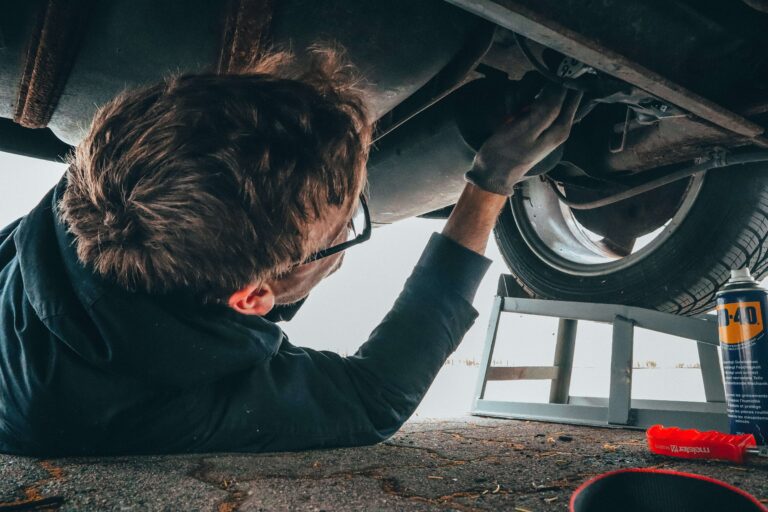Welcome to the world of golf carts, brought to you by GolfyTips. In this article, we’ll explore the intriguing domain of golf carts and their charging systems. Specifically, we’ll delve into two pressing questions that often occupy the thoughts of golf cart enthusiasts and owners: “Does the golf cart charger shut off automatically?” and “Is it beneficial to keep the golf cart plugged in continuously?” Our journey will provide you with a comprehensive understanding of how golf cart chargers function, the pivotal role played by automatic shut-off mechanisms, and the advantages and disadvantages of keeping your golf cart plugged in under various circumstances.
How Golf Cart Chargers Work
Before we dive into the answers to these questions, it’s crucial to comprehend the intricate inner workings of golf cart chargers. These chargers are masterfully engineered to deliver a steady and regulated flow of electricity to the batteries until they reach their optimal charge level. They come equipped with a sophisticated built-in mechanism that diligently monitors and detects the battery’s state of charge, ensuring a secure and efficient charging process.
Automatic Shut-off Mechanism
Indeed, golf cart chargers are equipped with a pivotal and precious feature—an automatic shut-off mechanism. This crucial safety feature ensures that the charger intelligently ceases the delivery of power to the batteries once they have reached their full charge capacity. This automated halt in charging prevents the potential hazards of overcharging, which could lead to battery damage and a significant reduction in their overall lifespan and performance.
Overcharging Concerns
The spectre of overcharging looms as a genuine and legitimate concern when it comes to maintaining golf cart batteries. When batteries are subjected to overcharging, their delicate chemistry can undergo harmful changes, leading to physical damage and a rapid decline in their operational capabilities. This is where the auto-off feature comes in handy. It provides peace of mind by protecting your batteries from the adverse effects of overcharging, ensuring their longevity and efficiency.
The Ideal Charging Practice
Now, let’s address the pivotal question—Is it better to leave a golf cart plugged in all the time? The answer lies in adhering to the ideal charging practice. While it is generally recommended to unplug the charger once the battery reaches full charge, there are scenarios and exceptions where it may be justified to leave the golf cart plugged in. Getting the balance right is key, as unnecessary overcharging can lead to long-term battery health issues.
Benefits of Leaving a Golf Cart Plugged In
While the standard practice is to disconnect the charger after a full charge, there are circumstances where leaving your golf cart plugged in offers substantial benefits. This approach ensures that your golf cart is always ready for action, which can be very convenient, especially if you require frequent and immediate use of your cart. Eliminates the need to wait for a recharge when time is of the essence.
Risks of Leaving a Golf Cart Plugged In
However, it is important to note that leaving a golf cart plugged in continuously is not without risk. Continuous trickle charging can cause a gradual reduction in battery life over time due to constant charging and discharging cycling. In addition, there is the potential for increased electricity costs associated with long-term charging. Therefore, the decision to leave your golf cart plugged in should be thoughtfully considered, weighing the convenience factor against long-term battery health and financial implications.
Maintenance Tips
Ensuring the longevity and optimal performance of your golf cart’s batteries necessitates diligent maintenance. To achieve this, consider the following tips:
- Regularly inspect and maintain the water levels in the battery cells, ideally every month, and replenish with distilled water as required.
- Keep a vigilant eye on your battery terminals, promptly addressing any signs of corrosion. Clean them with a mixture of baking soda and water to keep them dry and rust-free.
- Store your golf cart in an appropriate environment that is cool and dry to protect it from the harmful effects of extreme temperature fluctuations that can affect battery performance and overall life.
Conclusion
In conclusion, golf cart chargers indeed feature an automatic shut-off mechanism, and it is typically recommended to unplug the charger once your battery reaches full charge. However, it’s crucial to acknowledge exceptions and unique situations where leaving your golf cart plugged in can be advantageous. The key is to strike a balance that ensures the prolonged health of your batteries and the cost-effectiveness of your golf cart operation.
FAQs
- Can overcharging damage my golf cart batteries? Yes, overcharging can undoubtedly harm your golf cart batteries, leading to reduced lifespan and diminished performance. It’s imperative to disconnect the charger once the batteries reach full charge.
- How often should I check my golf cart battery’s water levels? Regular monitoring of the water levels in your golf cart battery cells is recommended, ideally on a monthly basis. Top up with distilled water as needed to maintain optimal levels.
- Are there any benefits to leaving a golf cart plugged in all the time? Leaving your golf cart plugged in can be advantageous when you require frequent and immediate use of your cart. It eliminates the waiting time for recharging. However, long-term considerations must be weighed.
- What should I do if I notice corrosion on my battery terminals? If you observe corrosion on your battery terminals, clean them using a mixture of baking soda and water. Ensure they are dry and corrosion-free to maintain a strong electrical connection.
- How can I extend the life of my golf cart batteries? To extend the lifespan of your golf cart batteries, follow proper charging practices, maintain clean terminals, and store your golf cart in an environment with stable temperatures to prevent extreme fluctuations.







